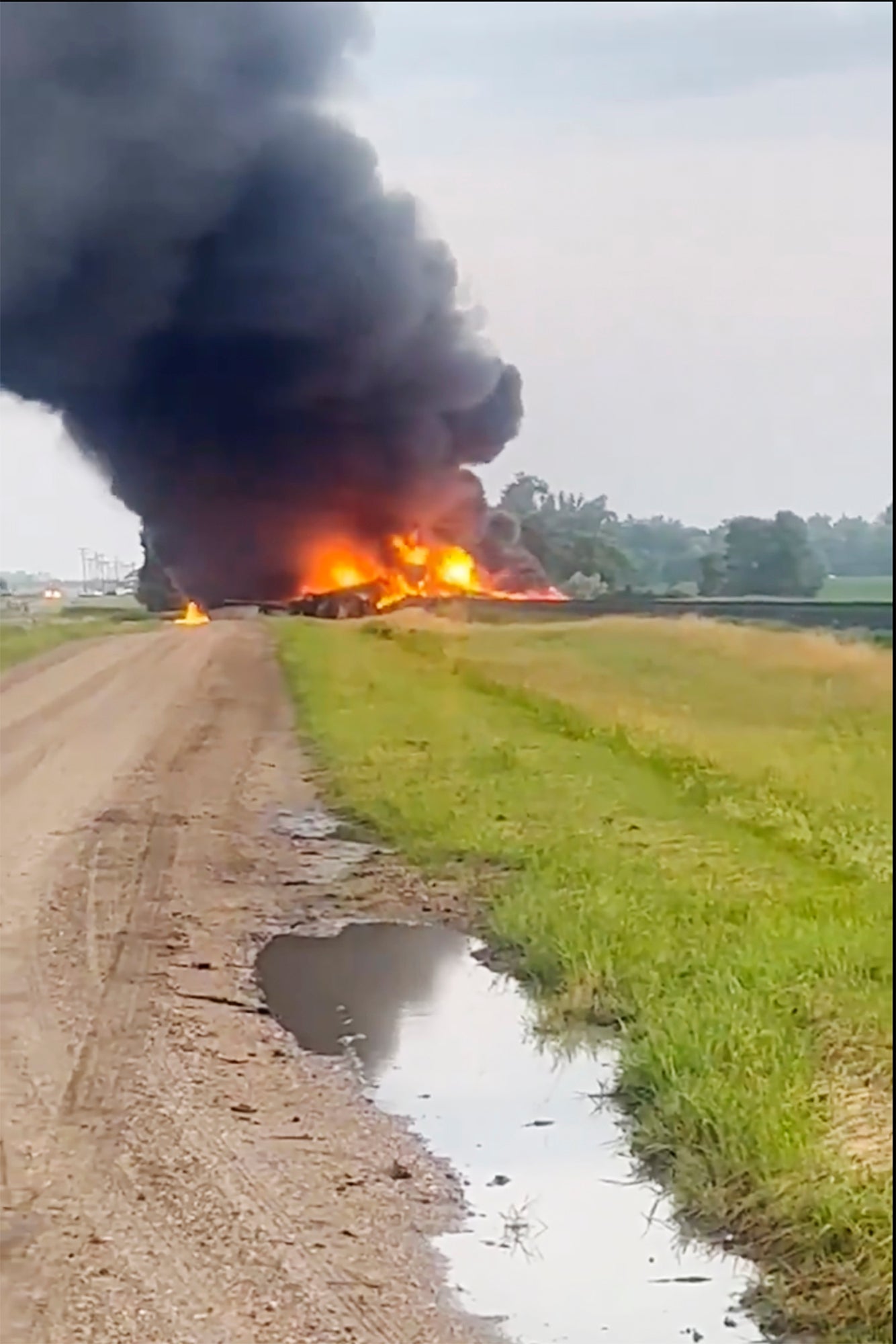Train carrying hazardous material derails in North Dakota and catches fire
The flames from derailed train cars carrying hazardous material are mostly extinguished a day after the incident in a remote area of North Dakota

Enflamed railcars carrying hazardous material were mostly extinguished Saturday, a day after they derailed in a remote area of North Dakota.
Officials said Friday no one had been hurt. The threat to those living nearby remained low, according to county emergency management, which reported no air contamination in the area or downwind.
Twenty-nine cars of a CPKC train derailed around 3:45 a.m. in a marshy area surrounded by farmland that is about 140 miles (225 kilometers) northwest of Fargo, county emergency management director Andrew Kirking said.
Kirking said in a statement Saturday that the fire would still occasionally flare up as responders moved railcars from the tracks. But “firefighting operations through the night and morning have been incredibly successful,” he said.
Emergency officials now say the contents of the derailed cars included anhydrous ammonia, methanol and plastic pellets.
Bill Suess, spill investigation program manager for the North Dakota Department of Environmental Quality, identified ammonia as a potential risk, but wind was carrying the smoke away from the nearby town of Bordulac, which has about 20 residents.
“Wind has been in our favor on this,” Suess said Friday.
Exposure to high concentrations of ammonia in the air can cause burning of the eyes, nose, throat and respiratory tract, and can result in blindness, lung damage or death, health officials say. Exposure to lower amounts can result in coughing and irritation of the nose and throat.
CPKC said in a statement Friday that it has “initiated its emergency response plan and launched a comprehensive, coordinated response.”
The railroad was the result of a merger last year of Canadian Pacific Railway and Kansas City Southern.
The National Transportation Safety Board said Friday that it is investigating.
Bookmark popover
Removed from bookmarks